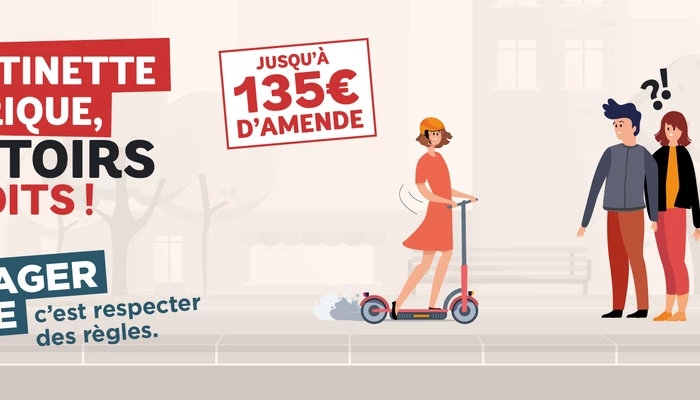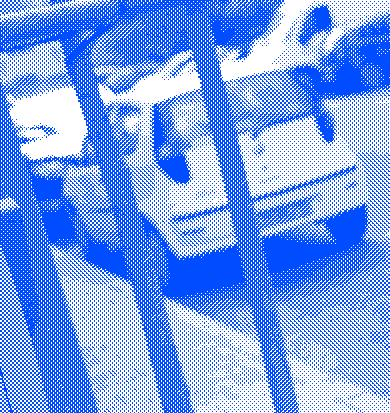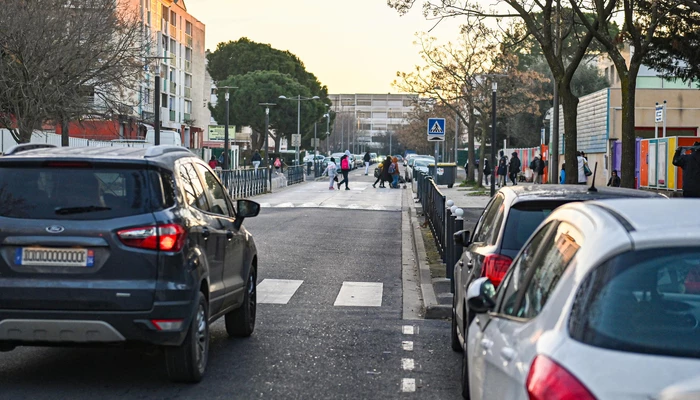Reduce traffic and combat air pollution
2 issues make it necessary to rethink traffic:
- Inflation in the number of cars: the threat of thrombosis. The attractiveness of the metropolis is generating strong demographic growth, which is injecting more and more cars into traffic. The number of light vehicles entering Montpellier every day was 77,700 in 2017. It is estimated at 89,370 for 2025 and 94,000 for 2030, while the population is set to increase by 20%. This means that 6,000 more vehicles are registered in the metropolis every year.
- An alarming air pollution : worsening respiratory difficulties. In the Montpellier urban area, road traffic is the source of 82% of nitrogen dioxide emissions and 30% of fine particulate emissions.
The 7 objectives of the new traffic plan
- End through-traffic in the city center, notably in the Comédie tunnel, to prevent the traffic that used to use avenue Clemenceau, closed to cars to allow passage of the streetcar line, from asphyxiating the neighborhood's smaller streets;
- Organize traffic between neighborhoods: both on the ring roads for users from within the city, but also through traffic on the major bypasses for users coming from outside: LIEN (Liaison Intercantonale d'Évitement Nord), COM (Contournement Ouest de Montpellier), DEM (Déviation Est de Montpellier);
- Adapt the city's operation to the tramway line 5 and future bustram lines ;
- Offering more room for bicycles, in particular by adapting the streets needed for the "Vélolignes montpelliéraines" Express Network ;
- Enlarge the pedestrianized city center for a great heart of the metropolis;
- Ease local service, deliveries, access to shops and downtown parking by making them more legible;
- Go towards a calmer, friendlier city, at children's height.
A double bypass around the city center
Passing through the city center to cross Montpellier completely, or to go from one district to another, is the main cause of traffic jams. It is therefore imperative to reduce this transit traffic.
2 routes are planned via boulevards and road bypasses:
- A bypass via avenues that irrigate the west, north and east of the city and, to the south, via the A709;
- A bypass via 3 road systems that will each reduce through-traffic in Montpellier:
- The LIEN (Liaison Intercantonale d'Évitement Nord), built by the Hérault department, between Saint-Gély-du-Fesc and the A750. The final section, from Saint-Gély-du-Fesc to Bel Air and the A750, is currently under construction and is scheduled to open in 2026.
- The COM (Contournement Ouest de Montpellier) between the A750-N109 and the A709. The project had been bogged down since the 1990s. Thanks to negotiations with the French government, the Metropole and the City of Montpellier were able to agree to finance the project without public money. State authorities estimate that the COM will cut journey times by a third on certain sections, and save 10,000 hours of transport time per day overall. Commissioning is scheduled for 2029/2030.
- The DEM (Déviation Est de Montpellier). The Hérault department is studying its construction, scheduled for 2029/2030.
Solutions to avoid traffic jams
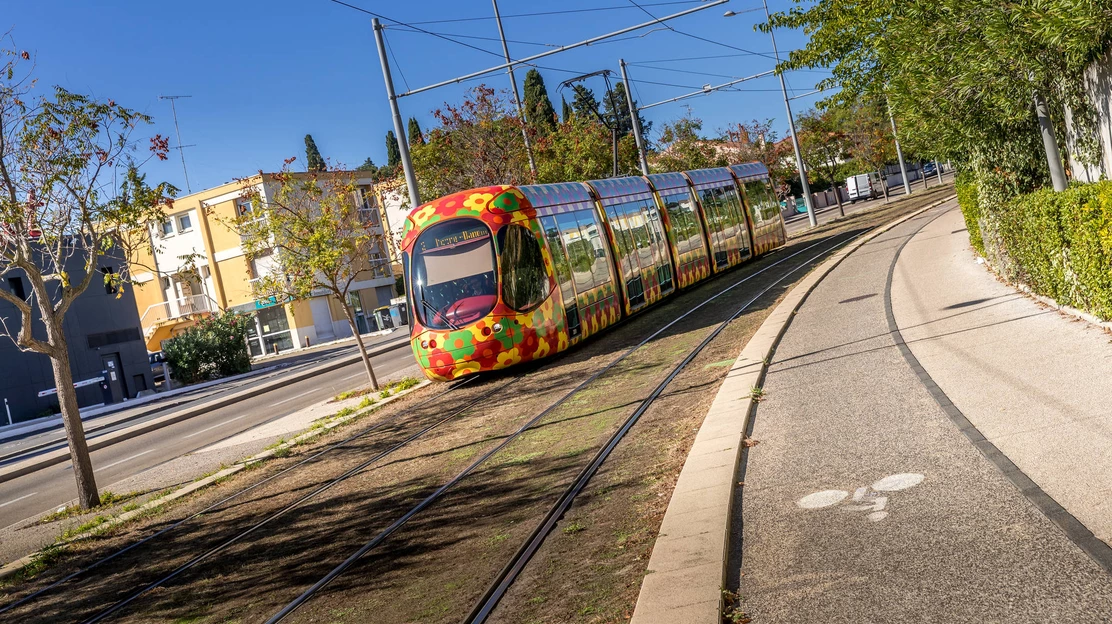
The mobility strategy, to which the Metropole and the City of Montpellier are committed, provides a set of answers to improve traffic flow and reduce traffic jams. Indeed, it deploys alternatives to the car, such as the bicycle, walking, public transport, spurred on by their free availability and by the extension of the offer: tramway lines 1 to 5, bustrams.
In addition, solutions are in place to avoid traffic jams: parking lots and alternative car use schemes.
Parking lots for easy access to the city center
Easy access to the city center with convenient parking is possible:
- with Parkings Relais located on tramway lines (2 additional P+Trams are under construction at Girac and Gennevaux for line 5);
- with other parking lots close to or in the city center.
The Comédie tunnel reinforces its function as access to the 1,200 spaces in the Comédie and Triangle parking lots. While transit traffic is excluded, the route to these parking lots is reinforced.
Car-sharing and car-pooling

2 schemes are available in the metropolis:
- Home-to-work car-sharingl : it was introduced by the Metropole, in partnership with the Klaxit platform, which has since become BlablaCar Daily. For the passenger, it's completely free if the journey's arrival and departure are within the metropolis. As of October 31, 2023, 32,827 people had signed up for it. In 2023, around 30,000 journeys per month, on average, were co-funded. For the driver, remuneration is, on average, €2.60 per journey, for a cost of €3.30, compensated by the Metropole. The scheme has been extended to Sète Agglopole and Pays de l'Or.
- Car-sharing: Modulauto is a self-service car service for individuals and businesses. It provides access to a car 24/7 at 80 stations in Montpellier, including the TaM and Effia public parking lots, as well as in Castelnau-le-Lez, Juvignac, Lattes and Saint-Jean-de-Védas.
Book for 1 hour, 1 day, 1 weekend or 1 week: website or 04 67 58 06 06.
600 additional charging stations for electric vehicles
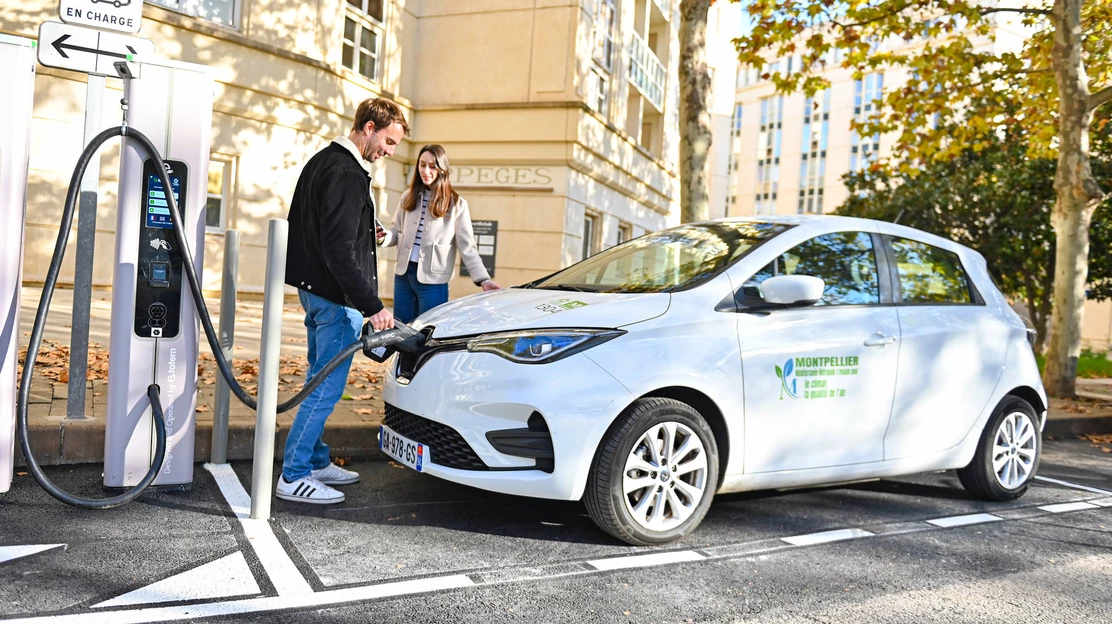
The Métropole has installed 66 charging stations, with 150 charging points. Notably in the vicinity of the Hôtel de Ville and Hôtel de Métropole, in business parks, in tramway and park-and-ride parking lots, and in multimodal interchange hubs (Saint-Roch, Baillargues, Villeneuve-lès-Maguelone, Montpellier Sud de France TGV station).
In 2024, the Metropole has gradually deployed 600 new charging points in public spaces with its partner E-totem. The slowest charge will be free for metropolitan residents via the M'ticket application. Charging points for electric-assist bicycles will also be available.
At 30 km/h, streets are safer and quieter
With the exception of a few major roads, since August 1, 2021, the maximum speed limit in Montpellier's "agglomerate zone" has been 30 km/h. There are many arguments in favor of this measure, particularly those relating to safety and, more generally, to peace and quiet on the streets, thanks to a balanced sharing of space. This decision is the responsibility of the local authorities. All are converging to implement it.
More safety for all
- The braking distance is 13 meters at 30 km/h, compared with twice that at 50 km/h.
- The driver's field of vision is wider. This enables him to anticipate and avoid accidents.
- For a pedestrian, the risk of death is 9 times lower at 30 km/h than at 50 km/h.
- Injuries are lighter.
The other benefits of 30 km/h
5 advances to consider when lifting the foot off the gas:
- Lower noise volume, so it's quieter.
- A more pleasant city to live in, more welcoming for children and the elderly.
- Smoothed road traffic, ensuring better cohabitation of pedestrians and cyclists with motorists.
- More pleasant city centers and neighborhoods.
- Local shops strengthened.
7 communes in the metropolis have already made this choice
The other communes have agreed to a gradual application.
In the metropolis, in addition to Montpellier, 7 communes are applying the 30 km/h rule:
- Castelnau-le-Lez - 80% of lanes at 30 km/h. In the center, Hôtel de Ville - Place de l'Europe crossings are at 20 km/h.
- Grabels - 30 km/h on main roads.
- Jacou - 30 km/h with the exception of avenue de Vendargues.
- Juvignac - 30 km/h in certain lanes, including avenue du Perret and avenue des Hauts de Fontcaude.
- Pérols - 20 km/h in the old village, with priority given to pedestrians on the roadway. 30 km/h elsewhere.
- Saint-Drézéry - 30 km/h in all streets.
- Vendargues - 30 km/h traffic near school groups, later extended to the entire commune in built-up areas.
At the end of the mandate, in 2026, all communes in the metropolis will have generalized 30 km/h.
The EPZ to combat air pollution

Since July 1, 2022, the "Low Emission Zone" (ZFE) has been implemented in the Montpellier metropolis. This national scheme is compulsory in 35 French conurbations.
The aim: to combat air pollution. Its method: step by step, restrict the right to circulate to the most polluting vehicles.
In the metropolis, the ZFE is one of the actions to improve air quality, along with public transport (free and extended network), cycling (reserved lanes and assistance) and walking.
Facing a health threat
The air is significantly impacted by various emissions linked to road traffic: nitrogen oxides first, then fine particles.
In addition, these pollutants combined with the effects of sunlight generate Ozone in the ambient air. All these pollutants have effects on health: respiratory problems, cardiovascular disease, increased risk of cancer...
The ZFE in 5 points
Users concerned
Private and professional users of motor vehicles, cars, vans, buses, trucks and heavy goods vehicles.
The 2 phases of the perimeter concerned
- Since July 1, 2022: Castelnau-le-Lez, Clapiers, Grabels, Jacou, Juvignac, Lattes, Le Crès, Montpellier, Pérols, Saint-Jean-de-Védas, Villeneuve-lès-Maguelone.
- From July 1, 2026: the 31 communes of the metropolis.
Crit'Air stickers
6 categories, from the least polluting vehicle to the most polluting, according to the energy used and the date of introduction.
Classification according to the information on the vehicle registration certificate ("carte grise"). You can apply for the sticker on the government website: certificat-air.gouv.fr
Restrictions
- 7d/7, 24h/24.
- Progressive restrictions, depending on the vehicle's level of air pollutant emissions, according to the Crit'Air sticker.
The main exemptions granted by the Metropole
These are the result of consultation with local political and economic players.
- "Light-duty" vehicle (less than 8,000 km/year).
- Vehicle for supplying markets.
- Company vehicle scheduled to be replaced by an alternative-energy vehicle.
- Trucks classified Crit'Air 3 or Crit'Air 4, fuelled with XTL, B100 or HVO, from a company with fewer than 250 employees, committed to greening its fleet.
- Vehicle with an adaptation, with mention on the registration certificate (VASP, BENNE AMO, BETON, FG TD).
- Vehicle, irrespective of Crit'Air sticker, with a traffic requirement less than or equal to 52 days per calendar year.
- Exempt routes for bypassing the EPZ, enabling continuity of road transit
- Access to the public transport network (P+TRAM)
- Access to business parks
In practice
